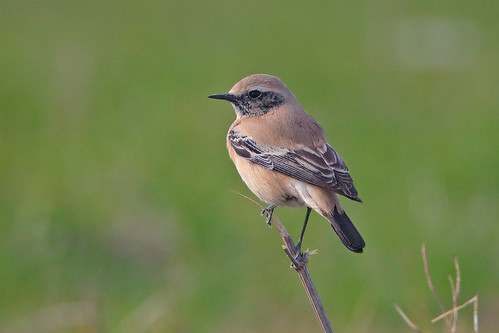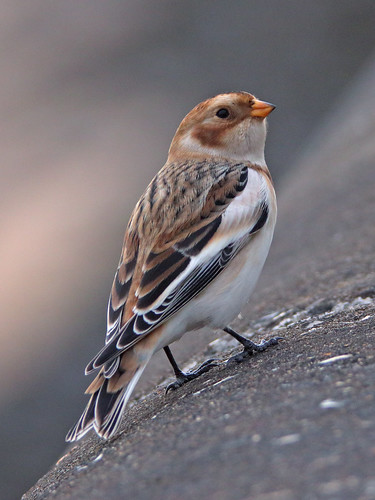The first was a Desert Wheatear (above) which spent several days foraging for insects on and around Joss Bay. On the day I went to see it, it was frequenting the edge of the cauliflower field overlooking the bay.
The all-black tail pattern (as compared to the T-shaped pattern of the more common Wheatear) is one of its main distinguishing features, but it can be difficult to see unless the bird is in flight (as shown below).
A few days after the Desert Wheatear departed, a Snow Bunting turned up on the stretch of coast between Dumpton Gap and Louisa Bay. Unlike the Desert Wheatear, Snow Buntings are annual winter visitors to the Kent coastline, though I usually have to go out to Reculver to see them.
This little bird was even more confiding than the Desert Wheatear, and not at all fazed by the people walking past and the array of lenses pointing at it. I had to back away from it several times just to keep it in focus.
Whereas the Desert Wheatear was feeding on insects, the Snow Bunting was foraging for seeds, using its beak to break open the husks.
Will we receive any more visitors before the end of the year? It has been a long time since I saw a Shore Lark, and a Lapland Bunting would be very welcome...
See also:




